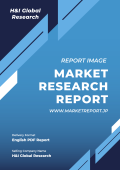1 Preface
2 Scope and Methodology
2.1 Objectives of the Study
2.2 Stakeholders
2.3 Data Sources
2.3.1 Primary Sources
2.3.2 Secondary Sources
2.4 Market Estimation
2.4.1 Bottom-Up Approach
2.4.2 Top-Down Approach
2.5 Forecasting Methodology
3 Executive Summary
4 Introduction
4.1 Overview
4.2 Key Industry Trends
5 Global Direct Fed Microbials Market
5.1 Market Overview
5.2 Market Performance
5.3 Impact of COVID-19
5.4 Market Forecast
6 Market Breakup by Product Type
6.1 Lactic Acid Bacteria
6.1.1 Market Trends
6.1.2 Market Forecast
6.2 Bacillus
6.2.1 Market Trends
6.2.2 Market Forecast
6.3 Others
6.3.1 Market Trends
6.3.2 Market Forecast
7 Market Breakup by Livestock
7.1 Swine
7.1.1 Market Trends
7.1.2 Market Forecast
7.2 Poultry
7.2.1 Market Trends
7.2.2 Market Forecast
7.3 Ruminants
7.3.1 Market Trends
7.3.2 Market Forecast
7.4 Aquatic Animals
7.4.1 Market Trends
7.4.2 Market Forecast
7.5 Others
7.5.1 Market Trends
7.5.2 Market Forecast
8 Market Breakup by Form
8.1 Dry
8.1.1 Market Trends
8.1.2 Market Forecast
8.2 Liquid
8.2.1 Market Trends
8.2.2 Market Forecast
9 Market Breakup by Region
9.1 North America
9.1.1 United States
9.1.1.1 Market Trends
9.1.1.2 Market Forecast
9.1.2 Canada
9.1.2.1 Market Trends
9.1.2.2 Market Forecast
9.2 Asia-Pacific
9.2.1 China
9.2.1.1 Market Trends
9.2.1.2 Market Forecast
9.2.2 Japan
9.2.2.1 Market Trends
9.2.2.2 Market Forecast
9.2.3 India
9.2.3.1 Market Trends
9.2.3.2 Market Forecast
9.2.4 South Korea
9.2.4.1 Market Trends
9.2.4.2 Market Forecast
9.2.5 Australia
9.2.5.1 Market Trends
9.2.5.2 Market Forecast
9.2.6 Indonesia
9.2.6.1 Market Trends
9.2.6.2 Market Forecast
9.2.7 Others
9.2.7.1 Market Trends
9.2.7.2 Market Forecast
9.3 Europe
9.3.1 Germany
9.3.1.1 Market Trends
9.3.1.2 Market Forecast
9.3.2 France
9.3.2.1 Market Trends
9.3.2.2 Market Forecast
9.3.3 United Kingdom
9.3.3.1 Market Trends
9.3.3.2 Market Forecast
9.3.4 Italy
9.3.4.1 Market Trends
9.3.4.2 Market Forecast
9.3.5 Spain
9.3.5.1 Market Trends
9.3.5.2 Market Forecast
9.3.6 Russia
9.3.6.1 Market Trends
9.3.6.2 Market Forecast
9.3.7 Others
9.3.7.1 Market Trends
9.3.7.2 Market Forecast
9.4 Latin America
9.4.1 Brazil
9.4.1.1 Market Trends
9.4.1.2 Market Forecast
9.4.2 Mexico
9.4.2.1 Market Trends
9.4.2.2 Market Forecast
9.4.3 Others
9.4.3.1 Market Trends
9.4.3.2 Market Forecast
9.5 Middle East and Africa
9.5.1 Market Trends
9.5.2 Market Breakup by Country
9.5.3 Market Forecast
10 SWOT Analysis
10.1 Overview
10.2 Strengths
10.3 Weaknesses
10.4 Opportunities
10.5 Threats
11 Value Chain Analysis
12 Porters Five Forces Analysis
12.1 Overview
12.2 Bargaining Power of Buyers
12.3 Bargaining Power of Suppliers
12.4 Degree of Competition
12.5 Threat of New Entrants
12.6 Threat of Substitutes
13 Price Analysis
14 Competitive Landscape
14.1 Market Structure
14.2 Key Players
14.3 Profiles of Key Players
14.3.1 BASF SE
14.3.1.1 Company Overview
14.3.1.2 Product Portfolio
14.3.2 Alltech
14.3.2.1 Company Overview
14.3.2.2 Product Portfolio
14.3.3 American Biosystems Inc
14.3.3.1 Company Overview
14.3.3.2 Product Portfolio
14.3.4 Bayer AG
14.3.4.1 Company Overview
14.3.4.2 Product Portfolio
14.3.5 Bio-Vet
14.3.5.1 Company Overview
14.3.5.2 Product Portfolio
14.3.6 Cargill Incorporated
14.3.6.1 Company Overview
14.3.6.2 Product Portfolio
14.3.7 Chr. Hansen A/S (Chr Hansen Holding A/S)
14.3.7.1 Company Overview
14.3.7.2 Product Portfolio
14.3.8 DuPont de Nemours Inc.
14.3.8.1 Company Overview
14.3.8.2 Product Portfolio
14.3.9 Kemin Industries
14.3.9.1 Company Overview
14.3.9.2 Product Portfolio
14.3.10 Koninklijke DSM N.V.
14.3.10.1 Company Overview
14.3.10.2 Product Portfolio
14.3.11 Lallemand Inc.
14.3.11.1 Company Overview
14.3.11.2 Product Portfolio
14.3.12 Novozymes A/S (Novo Holdings A/S)
14.3.12.1 Company Overview
14.3.12.2 Product Portfolio
14.3.13 Novus International Inc. (Mitsui & Co. Ltd)
14.3.13.1 Company Overview
14.3.13.2 Product Portfolio
*** 免責事項 ***
https://www.globalresearch.co.jp/disclaimer/











